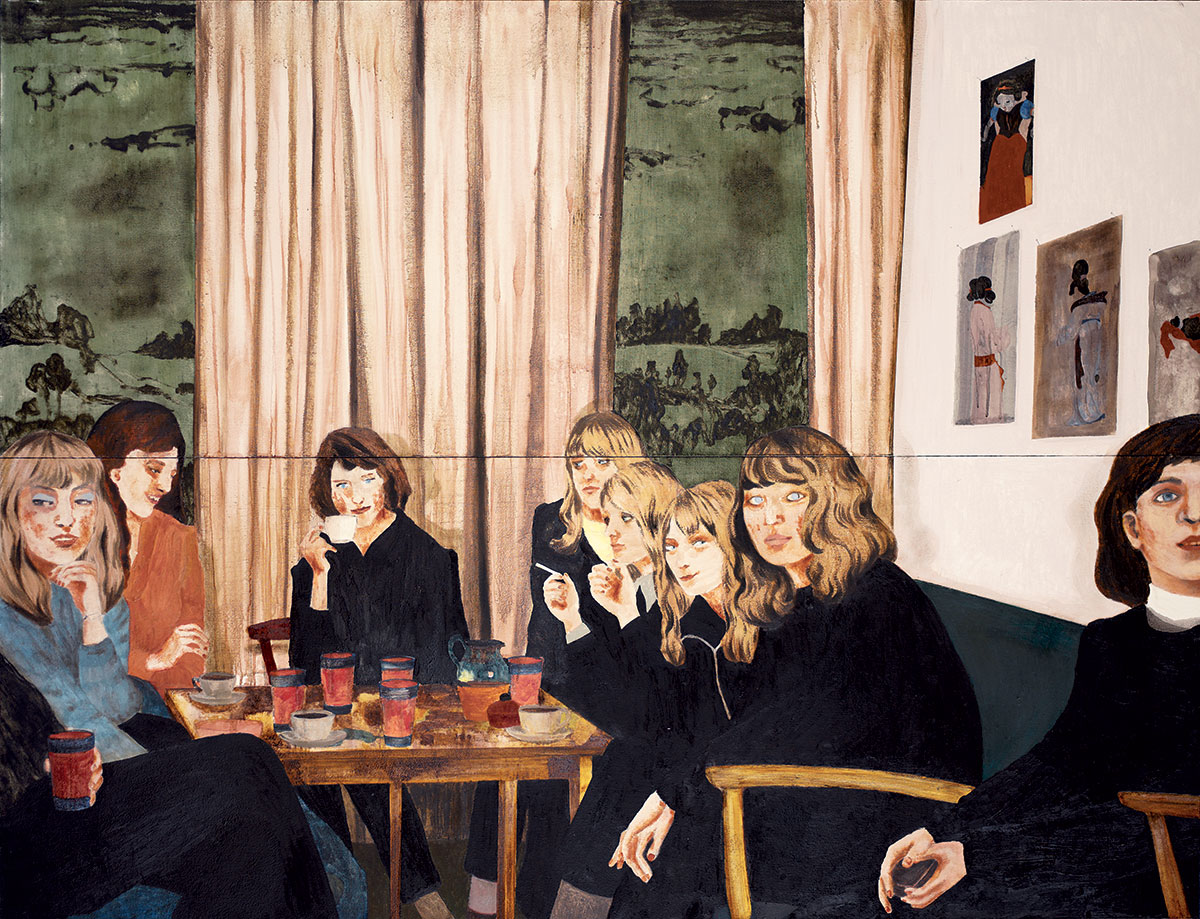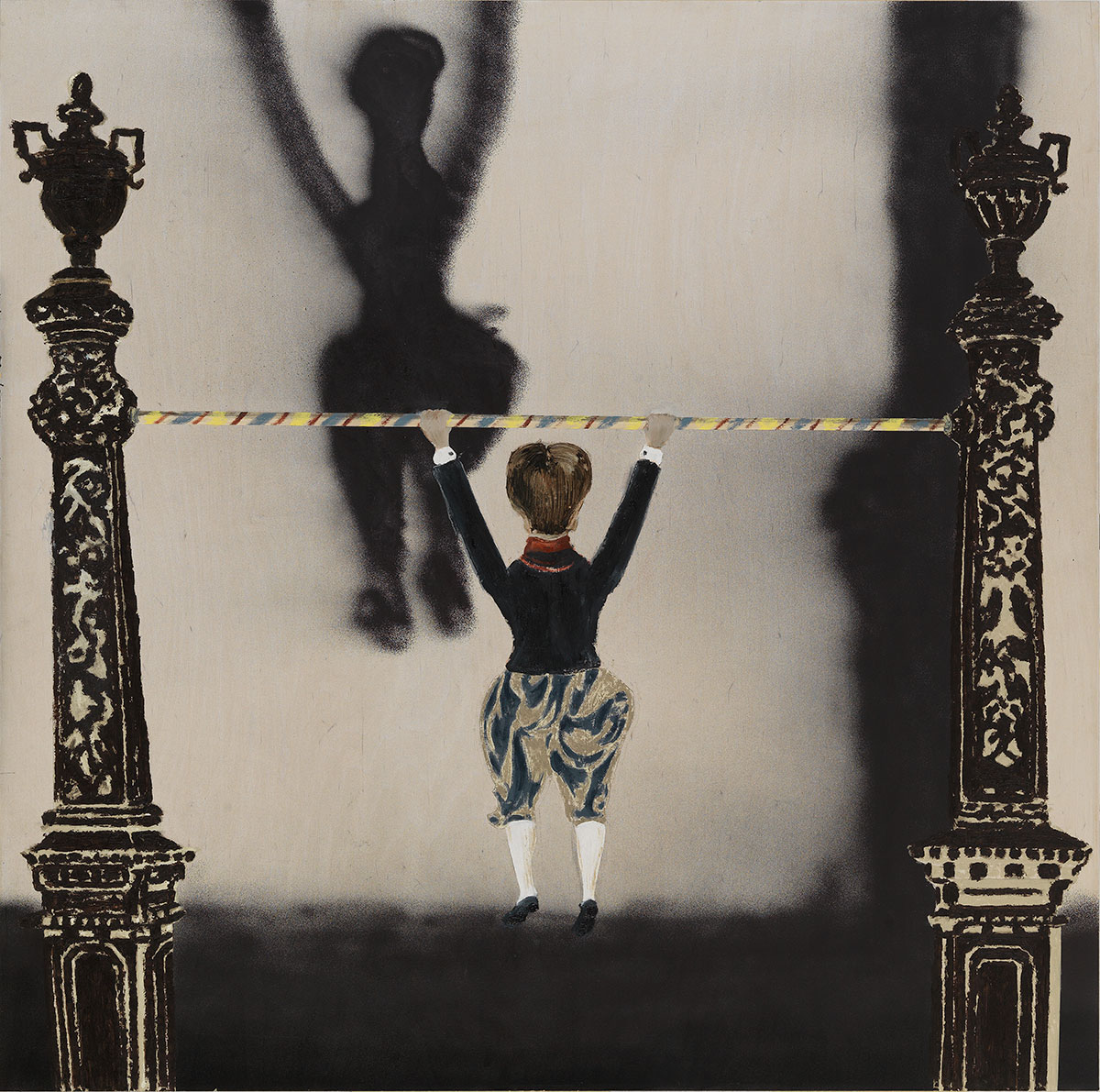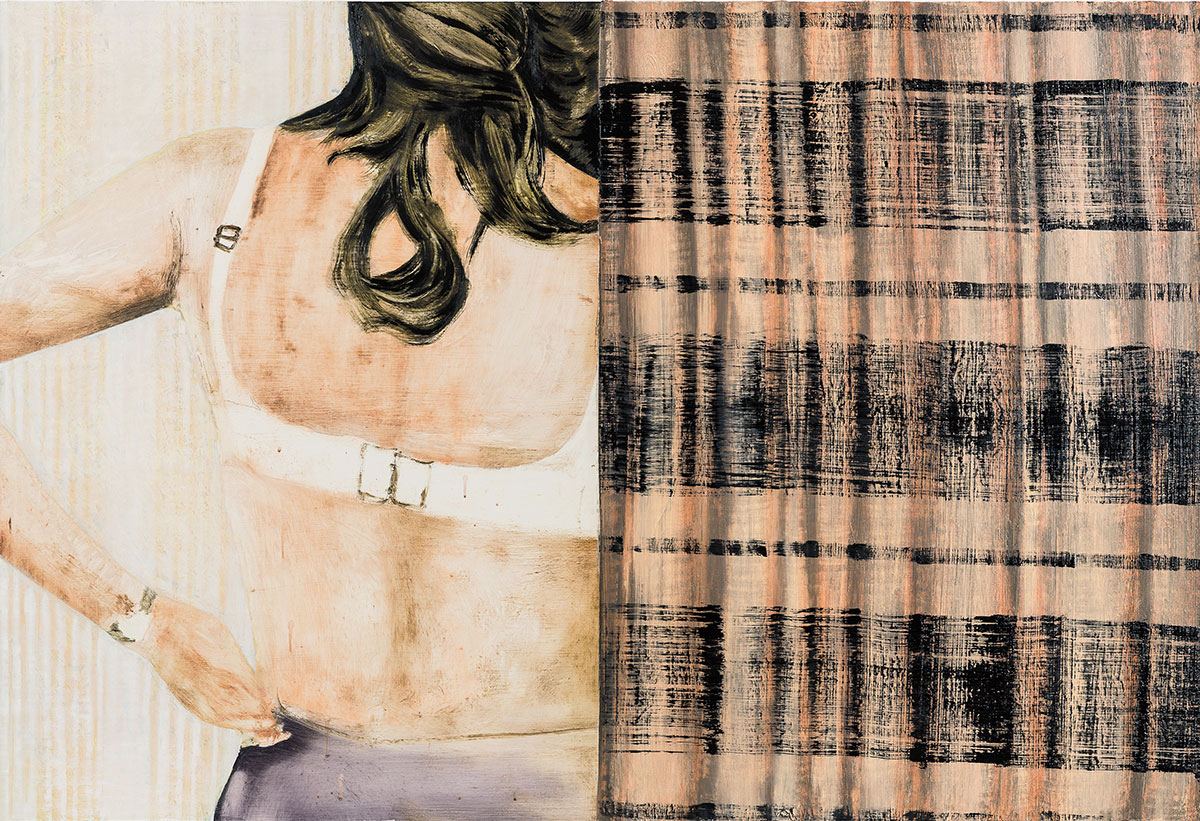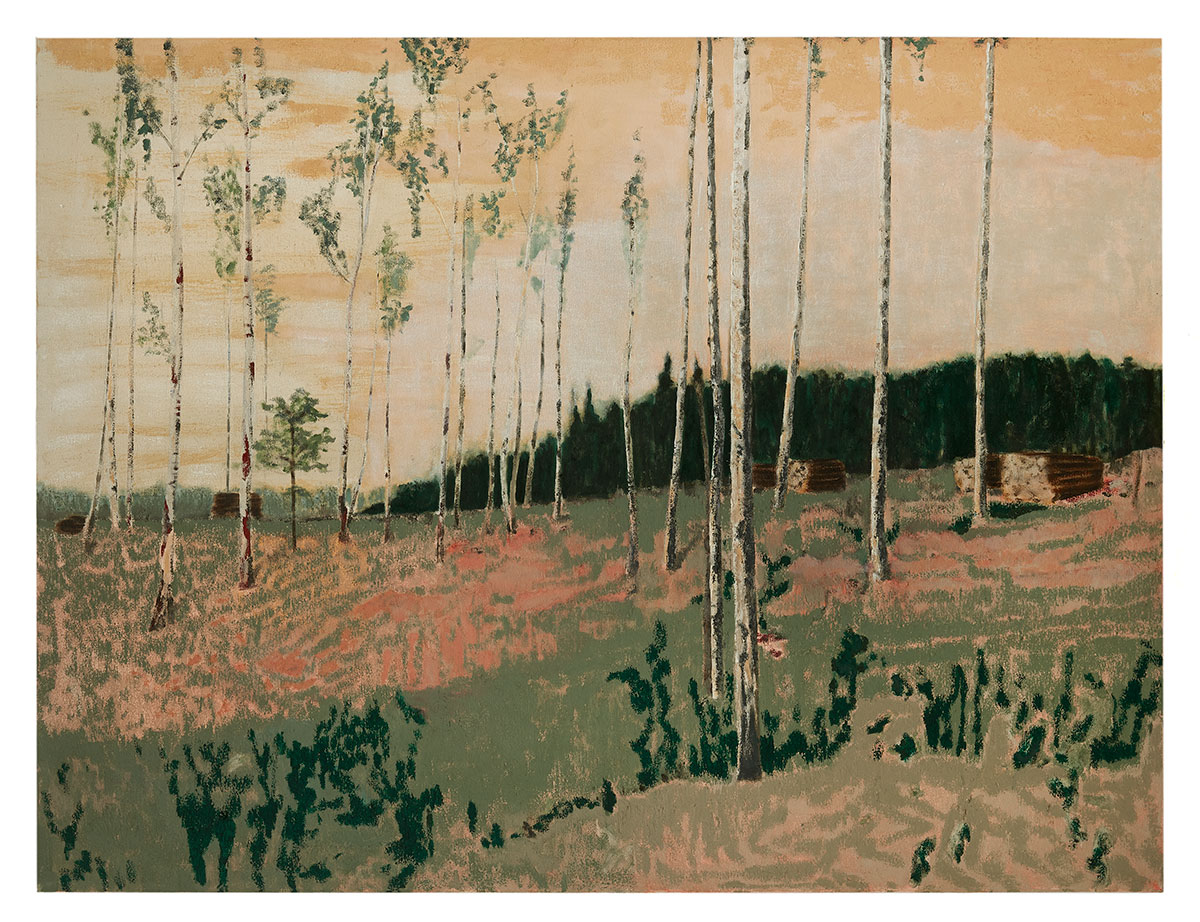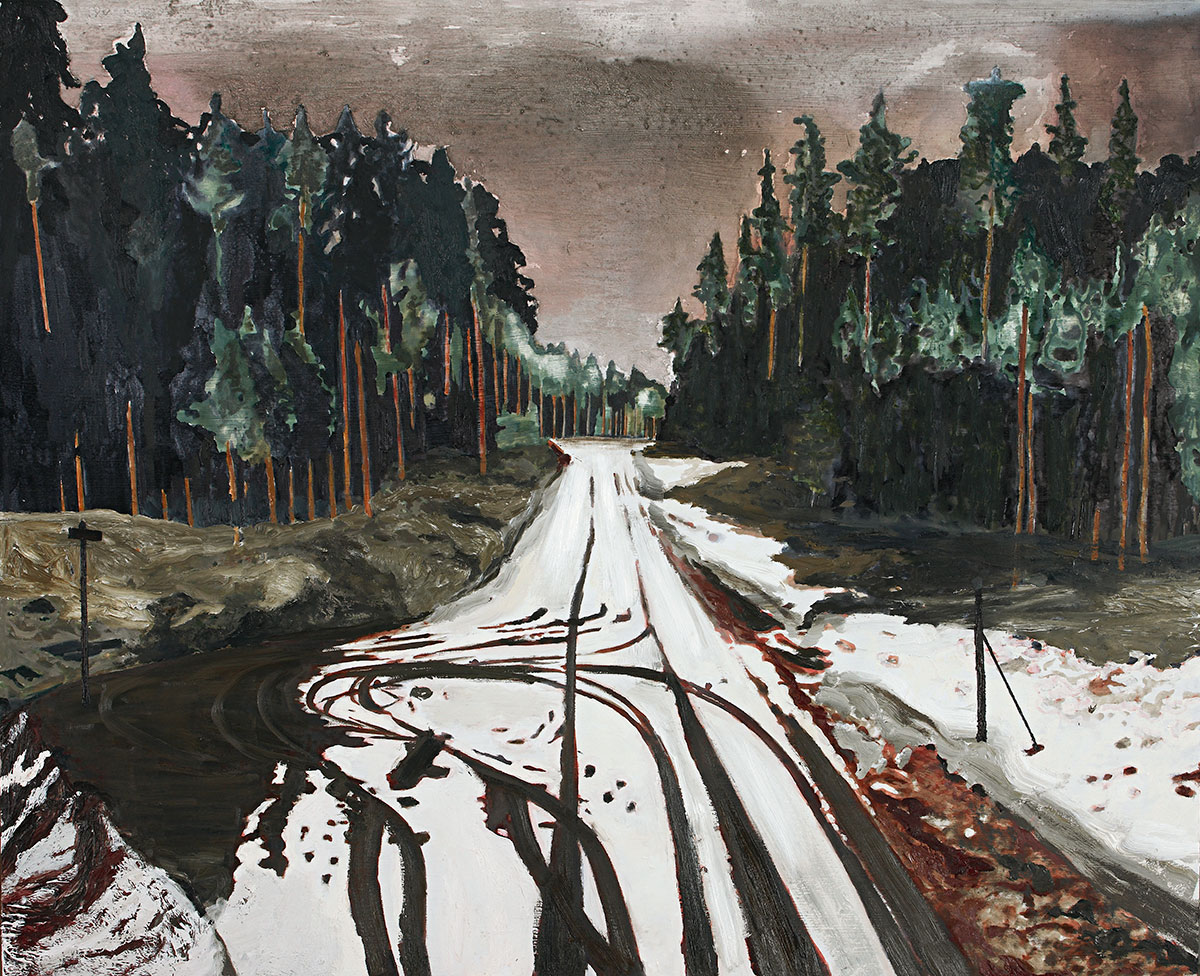ART-PRESENTATION: Mamma Andersson-Humdrum Days
 Inspired by filmic imagery, theatre sets, and period interiors, Andersson‘s compositions are often dreamlike and expressive. While stylistic references include turn-of-the-century Nordic figurative painting, folk art, and local or contemporary vernacular, her evocative use of pictorial space and her juxtapositions of thick paint and textured washes is uniquely her own. Her subject matter revolves around evocative, melancholic landscapes and nondescript, private interiors.
Inspired by filmic imagery, theatre sets, and period interiors, Andersson‘s compositions are often dreamlike and expressive. While stylistic references include turn-of-the-century Nordic figurative painting, folk art, and local or contemporary vernacular, her evocative use of pictorial space and her juxtapositions of thick paint and textured washes is uniquely her own. Her subject matter revolves around evocative, melancholic landscapes and nondescript, private interiors.
By Efi Michalarou
Photo: Louisiana Museum of Modern Art Archive
Mamma Andersson ranks as one of the most important painters of her generation. The exhibition “Humdrum Days” at Louisiana Museum of Modern Art is the first major presentation of Mamma Andersson’s work in Denmark. Featuring close to 60 works, “Humdrum Days” is designed as a survey, the exhibition cuts across chronology, highlighting Mamma Andersson’s main artistic devices and providing a comprehensive introduction to her central subject matter. Also, the artist has made 10 new works especially for the exhibition. Painting is at the centre of Mamma Andersson’s work. Her pictures open a universe of expressive and emotionally loaded stories: Sweeping landscapes with trees dissolving before your eyes. Interiors with fields of paint abruptly opening views into other worlds. Portraits of back-turned figures avoiding your gaze. Black holes sending your eye into free fall. Mamma Andersson composes her paintings from a wealth of art-historical references and found photos, films and historical clippings. They are paintings on top of paintings, pictures on top of pictures. Everything in the finished works is filtered through her singular artistic eye. Both dryly observant and colorfully poetic, from this vision a new world emerges. Over the years, the art of Mamma Andersson has been tied together by distinctive subject matter and painterly moves: The Nordic landscape with steep slopes, pine forests and a unique, high-contrast light. Dolls, often standing in for people, giving the painting a coagulated, object-like look. Back-turned figures with hidden faces adding mystery to the picture. And the colour black, often in many nuances and materials, sprayed on or roughly applied, creating a distinct darkness in the painting that the artist herself associates with death. Technically, Mamma Andersson combines several different materials in her works. Her signature aesthetic is the result of repeated applications and overpainting. Oil on canvas is covered in spray paint, paint is dragged in thin bands across the surface, producing a material fullness and variation showcasing her skill. The painting “About a girl” (2005), it’s crowded around the table. Nine women are seated there. Three of them have dark hair and appear to be slightly older. One of the girls is cut out of the picture and we cannot see her face. There are six red mugs, there weren’t enough to go round so they are complemented with three white coffee cups. The table top is shiny, order prevails. The thick curtain behind falls in heavy folds, outside a greenish landscape appears as in another world, beyond the density of the room. Pictures of geishas are pinned up on the wall, their kimono-clad figures turned away from the onlooker. Above is a picture of Snow-White, she looks down at the geishas and the women around the table. All photo albums contain compositions of this kind: people gathered round a table, someone leaning out and being cut out of the picture. One hand and a red mug is all that is left of one visitor that late autumn in 1973. “The Blank Memories Always Open From the South” (2002) is a serene painting, timelessness has settled on the singed ruin landscape. The color has stopped, the canvas has absorbed the liquids, washes and pigments. The moment is freeze-framed. The ridges of cloud are no longer moving, they are as immobile as the breathless water. The view of a possible classical city proves on closer inspection to consist of symmetrical repetitions. Corbelled buildings, reduced to a rhythmic band that is reflected in water of even greater abstraction. In the foreground are smooth birch trunks, providing vertical albeit broken support to the panorama. And where the artist’s signature would normally be found, there is a sewage plant of strange formations, a small corpse of industrial waste.
Photo: Mamma Andersson, Hasch Hisch, 2020, Oil and charcoal on canvas, 168 x 228 x 3,5 cm, © Mamma Andersson, Photo: Per-Erik Adamsson, Courtesy of the artist, Galleri Magnus Karlsson, Stephen Friedman Gallery and David Zwirner
Info: Curator: Marie Laurberg, Louisiana Museum of Modern Art, Gl Strandvej 13, Humlebæk, Denmark, Duration: 17/6-10/10/2021, Days & Hours: Tue-Fri 11:00-22:00, Sat-Sun 11:00-18:00, https://louisiana.dk



Right: Mamma Andersson, The Day After, 2020, Oil on canvas, 228 x 168 cm, Courtesy of the artist, Galleri Magnus Karlsson, Stephen Friedman Gallery and David Zwirner
